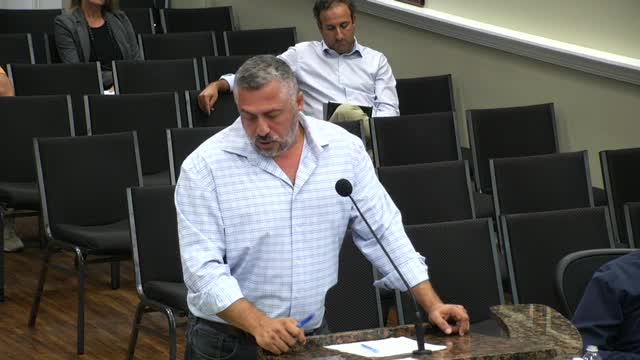Commission Approves Project 25BF 36 Amid Dune Protection Concerns
September 16, 2025 | Galveston , Galveston County, Texas
This article was created by AI summarizing key points discussed. AI makes mistakes, so for full details and context, please refer to the video of the full meeting. Please report any errors so we can fix them. Report an error »

In a recent meeting of the Galveston Planning Commission, members deliberated on a significant development project that has sparked both support and concern among commissioners. The discussion centered around a proposal identified as 25BF 36, which involves construction near designated dune conservation areas (DCA).
The applicant expressed a strong desire to move the project forward, indicating a willingness to comply with necessary conditions to ensure its approval. Following a public hearing, the commission was tasked with deciding whether to approve the project, which has been a contentious topic in previous sessions due to its proximity to sensitive environmental zones.
One commissioner voiced empathy for the property owner's situation but highlighted the importance of adhering to regulations designed to protect dune areas. The discussion revealed a split among commissioners regarding the project's implications. While some expressed hesitation based on past denials of similar projects in the DCA, others argued that the absence of a dune at the proposed site could justify an exception.
The conversation underscored the delicate balance between development and environmental protection. One commissioner clarified that the regulations are not merely legal requirements but are intended to safeguard the integrity of the dunes, which play a crucial role in the local ecosystem and can impact neighboring properties.
As the meeting progressed, the potential benefits of a beach restoration project were also mentioned, suggesting that such initiatives could mitigate some concerns related to the proposed development. The commission ultimately moved to approve the project with specified conditions, reflecting a cautious approach to balancing development needs with environmental stewardship.
This meeting highlights ongoing challenges faced by the Galveston Planning Commission as they navigate the complexities of urban development in environmentally sensitive areas. The decision to approve the project signals a willingness to adapt regulations while still prioritizing the protection of the region's natural resources. Future discussions will likely continue to explore the implications of such developments on the community and the environment.
The applicant expressed a strong desire to move the project forward, indicating a willingness to comply with necessary conditions to ensure its approval. Following a public hearing, the commission was tasked with deciding whether to approve the project, which has been a contentious topic in previous sessions due to its proximity to sensitive environmental zones.
One commissioner voiced empathy for the property owner's situation but highlighted the importance of adhering to regulations designed to protect dune areas. The discussion revealed a split among commissioners regarding the project's implications. While some expressed hesitation based on past denials of similar projects in the DCA, others argued that the absence of a dune at the proposed site could justify an exception.
The conversation underscored the delicate balance between development and environmental protection. One commissioner clarified that the regulations are not merely legal requirements but are intended to safeguard the integrity of the dunes, which play a crucial role in the local ecosystem and can impact neighboring properties.
As the meeting progressed, the potential benefits of a beach restoration project were also mentioned, suggesting that such initiatives could mitigate some concerns related to the proposed development. The commission ultimately moved to approve the project with specified conditions, reflecting a cautious approach to balancing development needs with environmental stewardship.
This meeting highlights ongoing challenges faced by the Galveston Planning Commission as they navigate the complexities of urban development in environmentally sensitive areas. The decision to approve the project signals a willingness to adapt regulations while still prioritizing the protection of the region's natural resources. Future discussions will likely continue to explore the implications of such developments on the community and the environment.
View full meeting
This article is based on a recent meeting—watch the full video and explore the complete transcript for deeper insights into the discussion.
View full meeting
